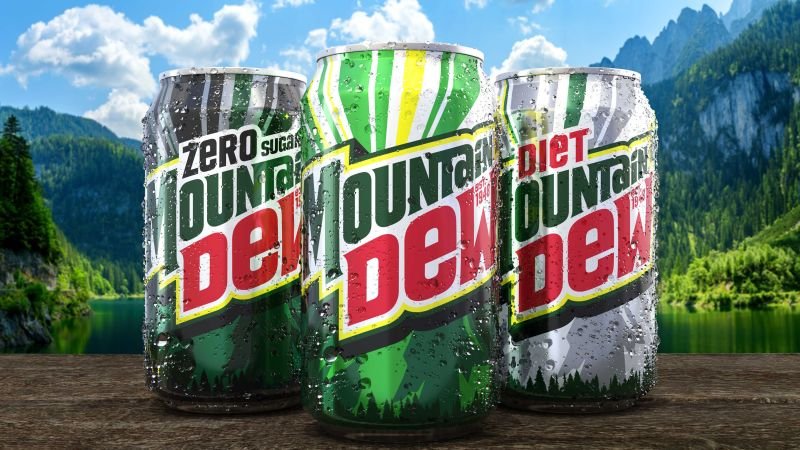Mountain Dew, a renowned PepsiCo-owned beverage, is undergoing a makeover that includes a new logo and packaging design. The word “mountain” is being brought back to cans and bottles after a two-decade absence, reconnecting the brand to its rustic roots. The changes are in response to slowing demand in North America for PepsiCo’s beverages, particularly Mountain Dew, which has experienced a 7% decrease in volume in the first half of 2024. The brand is moving away from its adrenaline-driven marketing strategy to appeal to a broader audience.
The rebranding strategy includes a redesigned logo that emphasizes the word “mountain,” a direct link to the brand’s origins in the outdoors. The new logo also incorporates a leaf to dot the “i” and a mountainous background in citrus-inspired yellow hues, highlighting the beverage’s fruity flavor. The updated design aims to convey a different kind of energy associated with outdoor activities rather than the sharp angles and high-energy image previously associated with Mountain Dew. The brand is bringing back its iconic “Do the Dew” tagline and introducing a new character, Mountain Dude, to encourage young consumers to disconnect from screens and enjoy nature.
PepsiCo’s decision to revamp Mountain Dew’s image is crucial for the brand’s growth, as it is one of the company’s major beverage offerings. With changing consumer preferences favoring healthier beverage options, the new look for Mountain Dew reflects an evolution and nurturing of the beloved franchise. Despite competition from other energy drink brands in PepsiCo’s portfolio, the rebranding aims to position Mountain Dew as a unique and refreshing choice for consumers. The company also faces challenges from smaller rivals like Poppi and Olipop, which are gaining popularity with their better-for-you alternatives.
The introduction of the new logo and packaging design for Mountain Dew comes at a time when soda manufacturers are experiencing a decline in sales due to shifting consumer preferences. PepsiCo’s North American beverage unit has seen slower volume, leading the company to revise its revenue outlook. The impacts of inflationary pressures and changing consumer spending patterns have forced PepsiCo to adapt and innovate to remain competitive in the market. By refreshing the brand’s image and marketing strategy, Mountain Dew aims to attract both loyal fans and new consumers who may have forgotten about the brand over time.
The rebranding of Mountain Dew is not a reactionary measure but a calculated effort to revitalize the brand and increase its appeal to a wider audience. The updated design has resonated positively with existing fans and has attracted interest from consumers who may not have tried the beverage in a while. By tapping into nostalgia, emphasizing the connection to nature, and promoting a different kind of energy, Mountain Dew seeks to stand out in a crowded market and capture the attention of both new and existing customers. The redesigned logo and packaging signify a new chapter for the brand, symbolizing growth, evolution, and a renewed focus on consumer engagement.











